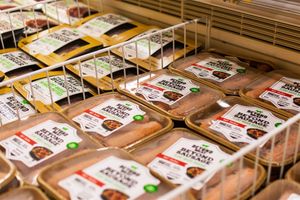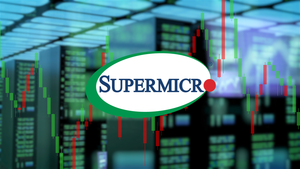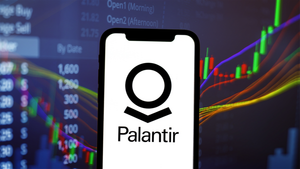
Novo Nordisk (NYSE: NVO) has once again demonstrated formidable strength in its obesity care segment, with powerhouse drugs Wegovy and Ozempic propelling the company to a robust Q2 2025 performance. However, this impressive growth narrative is punctuated by a revised, lower full-year sales and profit outlook, signaling intensifying competitive pressures and the enduring impact of a burgeoning market landscape. Despite reporting significant revenue and profit increases, the Danish pharmaceutical giant faces a pivotal moment as it navigates the complex interplay of high demand, aggressive rivals, and regulatory challenges that are reshaping the future of weight-loss and diabetes treatments.
The duality of Novo Nordisk's recent earnings report—stellar product performance juxtaposed with conservative future projections—underscores a dynamic financial environment. While its blockbuster GLP-1 agonists continue to captivate the market and drive substantial revenue, the company's caution reflects a shrewd assessment of the evolving competitive arena, particularly the aggressive expansion of Eli Lilly (NYSE: LLY) and the persistent threat of compounded drug alternatives. This forward-looking adjustment suggests that even market leaders must adapt to a rapidly changing healthcare ecosystem where innovation, pricing, and access are continuously being redefined.
Strong Performance Meets Strategic Realignment
Novo Nordisk reported an impressive Q2 2025 revenue of DKK 76.857 billion, marking a substantial 13% year-over-year increase, or 18% at Constant Exchange Rates (CER). Net income soared by 32% to DKK 26.503 billion, while operating profit grew by 29% (25% reported) to DKK 33.449 billion, yielding a healthy operating margin of 43.5%. Diluted earnings per share (EPS) climbed to DKK 5.96, up from DKK 4.50 a year prior, demonstrating strong financial execution.
The primary engine behind this remarkable growth was the obesity care segment, which saw its revenue surge to DKK 20.372 billion in Q2 2025, a 53% increase from the previous year. Wegovy, the company’s flagship weight-loss treatment, experienced a 67% year-over-year sales increase in Q2 2025, with international sales skyrocketing by 320% to DKK 12 billion ($1.87 billion) in the quarter alone. Ozempic also maintained its strong momentum, with sales growing by 14% in DKK and 15% at CER for the first half of the year. This robust uptake confirms the immense global demand for effective obesity and diabetes management solutions.
However, amidst these glowing figures, Novo Nordisk revised its full-year sales growth guidance downwards to 8-14% at CER, from a previous 13-21%. Operating profit growth was similarly adjusted to 10-16% at CER, down from 16-24%. This revision primarily reflects heightened competitive pressures in the U.S. GLP-1 market, notably from unregulated compounded GLP-1 alternatives and the rapid ascent of Eli Lilly's Zepbound/Mounjaro. The company also anticipates a mid-single-digit negative impact on operating profit growth due to the acquisition of three Catalent manufacturing sites, a strategic move to bolster its production capacity in the long run.
The timeline leading up to this moment has been characterized by explosive demand for GLP-1 drugs following their clinical trial successes and subsequent approvals. As Wegovy and Ozempic gained traction, Eli Lilly’s tirzepatide (Mounjaro for diabetes and Zepbound for weight loss) entered the market, presenting a formidable rival with potentially higher efficacy. Simultaneously, a grey market of compounded GLP-1 versions emerged, offering cheaper but unregulated alternatives, further intensifying the competitive landscape and putting pressure on pricing and market share for the key players.
The Shifting Tides: Winners and Losers in the GLP-1 Race
In this high-stakes environment, the immediate "winners" are arguably the patients gaining access to increasingly effective weight management and diabetes treatments, and to some extent, Eli Lilly (NYSE: LLY) and certain compounding pharmacies, albeit with caveats. Eli Lilly has become a significant challenger, with Zepbound's U.S. sales surging an astounding 172% year-on-year in Q2 2025. This rapid growth has allowed Eli Lilly to surpass Novo Nordisk's market lead in the obesity sector with tirzepatide, fueled by strong efficacy data that positions it favorably against semaglutide. For Eli Lilly, this translates into booming revenues and an increasingly strong market valuation, solidifying its position as a dominant force in chronic disease management.
Compounding pharmacies, while facing ongoing legal battles and regulatory scrutiny from companies like Novo Nordisk, have capitalized on the supply shortages and high costs of branded GLP-1 drugs. By offering cheaper, often unregulated, compounded versions, they have met a segment of patient demand, effectively becoming a "loser" for the branded pharmaceutical companies but a "winner" for consumers seeking more affordable options. However, the long-term viability and ethical implications of this segment remain uncertain due to the lack of FDA oversight and potential quality control issues.
Novo Nordisk (NYSE: NVO), despite its stellar product sales, finds itself in a more nuanced position. While its obesity care segment continues to be a growth engine, the revised outlook and declining global diabetes value market share (down 1.4% to 32.6% over the past year) indicate that the company is a "loser" in terms of unchecked market dominance. The pressure from Eli Lilly and compounded drugs is forcing Novo Nordisk to adapt, leading to strategies like expanding direct-to-consumer sales via NovoCare Pharmacy, offering reduced prices in cash channels, and undertaking a significant company-wide transformation with DKK 8 billion in restructuring costs. These proactive measures are essential for the company to maintain its competitive edge and regain market share.
The ultimate winners will likely be the pharmaceutical companies that can innovate effectively, scale manufacturing to meet demand, navigate regulatory landscapes, and develop comprehensive patient access strategies. The intense competition is driving down prices and expanding access, which is a net positive for patients in the long run, provided that product quality and safety are maintained.
Industry Impact and Broader Implications
The robust performance of Novo Nordisk's obesity care segment, coupled with its revised outlook, reflects significant shifts within the pharmaceutical industry, particularly within the burgeoning GLP-1 market. This event underscores a broader trend: the medicalization of obesity is not just a niche but a mainstream therapeutic area, rapidly reshaping chronic disease management. The sheer demand for Wegovy and Ozempic, mirrored by the explosive growth of Eli Lilly's Zepbound, signals a fundamental change in how healthcare providers and patients approach weight loss and metabolic health. This paradigm shift creates immense pressure on drug manufacturers to innovate, scale production, and differentiate their offerings in an increasingly crowded space.
The ripple effects on competitors and partners are profound. Pharmaceutical companies without a strong GLP-1 pipeline are scrambling to either acquire assets or accelerate their own research and development in this lucrative area. Biotech firms specializing in related mechanisms of action or delivery methods are becoming attractive acquisition targets. Moreover, the manufacturing and supply chain sectors are under immense strain, highlighted by Novo Nordisk's acquisition of Catalent sites to bolster production. This strategic move, while impacting short-term profit growth, is indicative of the industry-wide challenge to meet unprecedented demand, suggesting potential consolidation or significant investment in manufacturing infrastructure across the board.
Regulatory bodies, such as the FDA, are facing increased scrutiny and pressure regarding the oversight of compounded drugs. While the FDA ended its compounding grace period in May 2025, the persistence of these "copycat" versions highlights a gap in enforcement and consumer protection. This situation could lead to more stringent regulations on compounding pharmacies, increased legal action from branded drug manufacturers, and potentially a re-evaluation of how such emerging markets are managed to ensure patient safety and fair competition. Historically, similar scenarios have played out with generic drugs, but the off-label and compounded use of GLP-1s presents unique challenges due to the drugs' novelty and high demand.
The intense competition also has implications for healthcare payers and policy. As more effective weight-loss drugs become available, there will be increasing pressure on insurance providers to cover these treatments, potentially leading to significant shifts in healthcare budgets and benefit designs. Governments may also explore policies to address drug pricing and access, especially as these drugs move from niche to mass-market appeal. The "obesity drug war" between Novo Nordisk and Eli Lilly serves as a potent example of how concentrated market power and rapid innovation can trigger widespread industry transformation and regulatory re-evaluation.
What Comes Next
Looking ahead, the next few quarters will be critical for Novo Nordisk (NYSE: NVO) as it endeavors to solidify its market position amidst fierce competition. In the short term, the company will likely double down on its legal and regulatory efforts to combat unregulated compounded GLP-1 alternatives, aiming to protect its intellectual property and market share. Simultaneously, its strategies to expand direct-to-consumer sales through NovoCare Pharmacy and offer reduced pricing in the cash channel for Wegovy signify a direct response to pricing pressures and a bid to enhance patient access, bypassing traditional channels where competition from Eli Lilly (NYSE: LLY) and generics is most acute. These tactical shifts are crucial for retaining customers and attracting new ones in a rapidly evolving market.
In the long term, Novo Nordisk’s focus will extend beyond current market battles to its pipeline. The development of oral semaglutide for obesity and the exploration of Wegovy's potential indications, such as in Metabolic Dysfunction-Associated Steatohepatitis (MASH), represent strategic pivots towards broader therapeutic applications and enhanced patient convenience. An oral GLP-1 for weight loss could be a significant game-changer, potentially expanding market reach by offering a non-injectable alternative. These R&D efforts are vital for sustaining long-term growth and maintaining innovation leadership. The company's recent acquisition of Catalent manufacturing sites, while impacting immediate profit outlook, is a foundational investment aimed at ensuring robust supply to meet escalating global demand, hinting at significant global expansion plans.
Market opportunities will emerge as untapped global markets become more accessible and as awareness of obesity as a treatable chronic disease grows. However, challenges will persist, including the need to manage supply chain complexities, navigate diverse international regulatory environments, and differentiate products in an increasingly crowded and competitive landscape. The "obesity drug war" could intensify, potentially leading to further pricing pressures or the emergence of novel combination therapies. Strategic adaptations will involve not only product innovation but also sophisticated marketing and distribution models to effectively reach and educate both healthcare providers and patients. Potential scenarios range from a duopoly dominated by Novo Nordisk and Eli Lilly to a more fragmented market with new entrants and diverse therapeutic options, depending on the success of ongoing research and regulatory approvals.
A Crucial Juncture for the Obesity Care Market
Novo Nordisk's Q2 2025 earnings report paints a clear picture of a company at the zenith of its product cycle, yet simultaneously bracing for an era of unprecedented competition. The exceptional growth in its obesity care segment, driven by Wegovy and Ozempic, unequivocally underscores the immense demand for effective weight management and diabetes solutions globally. These drugs have not only transformed Novo Nordisk’s financial trajectory but have also ignited a revolution in chronic disease treatment, positioning the company as a pioneer in a rapidly expanding therapeutic area. The substantial revenue and profit increases are a testament to the efficacy and market acceptance of its GLP-1 portfolio.
However, the revised, lower full-year outlook serves as a stark reminder that even market leaders are not immune to the pressures of a dynamic industry. The aggressive push from Eli Lilly (NYSE: LLY) with Zepbound and the persistent challenge from compounded GLP-1 alternatives are reshaping market share dynamics and forcing strategic adjustments. This signals a pivotal moment for the pharmaceutical industry, highlighting the fierce innovation race and the evolving landscape of drug pricing and access. For investors, this environment necessitates a nuanced view: acknowledging Novo Nordisk’s (NYSE: NVO) current strengths while understanding the strategic shifts required to sustain long-term growth.
Moving forward, investors should closely monitor several key factors. The success of Novo Nordisk's legal actions against compounding pharmacies will be crucial for protecting its branded product market. The pace of scaling up manufacturing capacity, especially following the Catalent acquisition, will dictate the company's ability to meet global demand. Furthermore, the progress of its pipeline, particularly oral semaglutide for obesity and new indications for Wegovy, will be vital for future differentiation. Finally, the broader competitive environment, including new entrants and the evolving efficacy and safety profiles of rival drugs, will continue to influence market dynamics. The coming months will undoubtedly offer a fascinating glimpse into the future of chronic weight management and the companies vying for dominance within this transformative therapeutic space.





